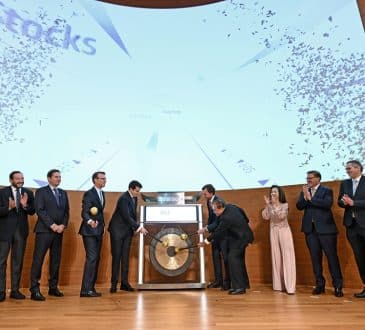The Power of Context in Effective Leadership Communication

Leaders don’t have time to waste. According to Harvard Business Review, CEOs spend 9.2 hours working per day, and 62.5 hours per week working on average. Many see their schedule, while grueling, as essential to the role of leadership. A CEO’s main role is strategy and moving their organization forward. For this reason, if you have a meeting set with an important individual, you need to know exactly what you want to accomplish in the meeting, and exactly how you are going to accomplish that before the meeting even begins.
Often communication lacks clarity due to missing context. I define setting the proper context as putting the “why” before the “who”. The “why” should guide the content, which is the “what”. Understanding why (context) we are engaging with someone (the contact) helps in figuring out what (the content) to listen for and what to say during our interactions. This approach ensures more effective and more meaningful communication.
To illustrate this, I’ll share a quick story. My wife, Kelli, and I recently attended an event where Vice President Kamala Harris was a speaker. Following her presentation, as she was making her way through the crowd, shaking hands and greeting people, I found VP Harris and my wife engaged in a full-blown conversation. The conversation started with Kelli remarking on how something VP Harris said had made her feel. They connected on the “why,” reaching an emotional level with a shared feeling and understanding. They were so engaged in the topic, it was like they were the only two people in the room.
It can take time to put in the due diligence, but understanding the context in a meeting will pay dividends in establishing a productive working relationship with all parties involved.
Here’s How to Establish Context Prior to a Meeting:
- Connect with shared contacts
Go to their LinkedIn to see contacts you have in common, then connect with those people. Ask them questions about the leader’s personality.
– Are they direct?
– Do they like stories?
– Do they prefer long emails or short ones?While these details might seem trivial, they will help you to communicate in a way that person prefers and that right there gives you a huge advantage.
In addition, find out how they dress, and what the culture of their company is. If you go to a meeting with a CEO and they are wearing slacks and sneakers and a collared shirt and you show up in a three piece suit, that could be a turnoff. It could communicate that you don’t understand their culture. Personally, if I know I’m dressed correctly, it gives me the confidence to knock a meeting out of the park.
Recently, I was interviewing a young man for a program coordinator/coach position. I had noticed the casual way he was dressed in the parking lot and was impressed by him. Clearly he did enough research on how to dress to fit in with our culture (or just got lucky), but it gave him a huge advantage in my eyes. I later found out he had a conversation with someone on my staff.
- Do an internet search
This might feel intrusive, but this person may have written articles that talk about their passions and problems they’d like to solve, or even written a book. Having access to their inner thoughts will quickly help you establish who they are and what matters most to them, and that information can help you establish how you plan to work together.It can also inform you on additional shared connections. It’s certainly true that often in life, who you know can be more important than what you know. If you can bring up a shared contact in a conversation, that can also help you better and more quickly connect to someone you are meeting for the first time.
- Pinpoint a shared problem or pain point to connect with
Going into a meeting, you have an idea of the problems you personally need solved. That’s your “what.” Your “who” is the person you’ve decided can help you solve the problem. It can be as simple as looking for someone to mentor you. Many times, even as a successful leader myself, I want to tap into the knowledge of those around me that understand how I can level-up and better serve the hundreds of youth in my community.I recently met with a prominent Atlanta Black businessman who understands and feels the problem of income inequality in Atlanta. It’s something he and his team are challenged by on a daily basis as the head of a financial organization. That’s also a challenge for my team as well. My objective with him is to find a way to work together to communicate this problem and create pathways to a solution.
I had to know going into the meeting exactly what I wanted to accomplish and how. His knowledge and support will not only legitimize my mission, but can also help me better communicate my organization’s needs.
In conclusion, there’s a lot of power in understanding context. If you’re going into a war, and trying to win, you need training. Think of research before an important meeting as that training. As executive leaders, we know a lot about many things. Research/training before our meetings help us know the specific things that are pertinent to the context of the situation at hand. Training is a deeper dive into understanding something that will position you to win. And it’s 100% necessary.
In an important meeting, winning could be talking less or talking more. But you could also win the conversation just by wearing the right jacket. You’ll never know if you haven’t figured out the context before you started communicating the content.
Written by CJ Stewart.
Have you read?
Richest Countries In Europe In 2024.
Most Attractive Countries To Private Equity, Venture Capital, and Hedge Fund Investors.
Revealed: Highest-paid news media executive in the United Kingdom.
Countries Leading the Way on Climate Change.
World’s Best Countries For Adventure Tourism.
Bring the best of the CEOWORLD magazine's global journalism to audiences in the United States and around the world. - Add CEOWORLD magazine to your Google News feed.
Follow CEOWORLD magazine headlines on: Google News, LinkedIn, Twitter, and Facebook.
Copyright 2025 The CEOWORLD magazine. All rights reserved. This material (and any extract from it) must not be copied, redistributed or placed on any website, without CEOWORLD magazine' prior written consent. For media queries, please contact: info@ceoworld.biz








